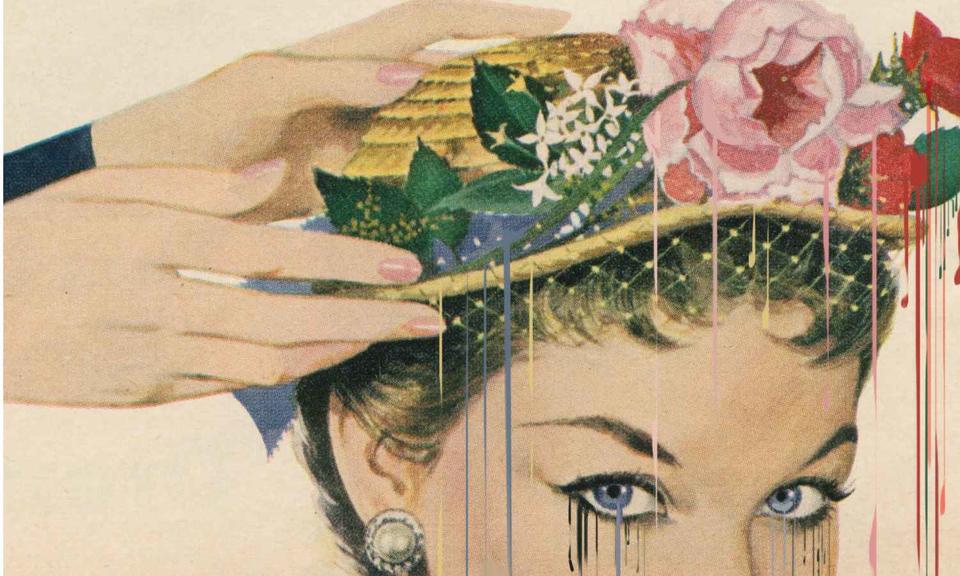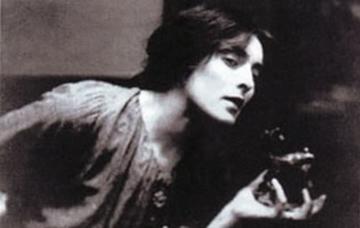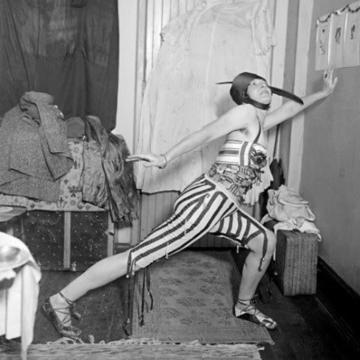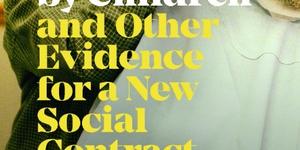
On Creating Collaboration through Collage
Suzanne Zelazo on her forthcoming poetry collection Lances All Alike
My forthcoming book of poetry, Lances All Alike, is all about amplifying women's voices—enabling them to speak to and through each other, and in some cases, over their male counterparts. Specifically, the collection explores lines of influence, appropriation, and female artistic collaboration.
The “Silence Breakers” of the #MeToo movement (as Time magazine referred to them) have catapulted a cultural transformation. They force accountability in the gendered power play of sexual harassment. In an unprecedented way, their voices are being heard and they are shouting down centuries of abuse. To be silenced, derided, or even to have their innovations misattributed to their male counterparts, is nothing new for female artists – even in 2018, the Recording Academy President and CEO Neil Portnow said onstage at the Grammy awards that if more women wanted to be nominated and win, they needed to "step up." But can the current reinforcement of female power – of women's solidarity – raise the volume for female artists whose contributions have been muted simply because they were women?
Lances All Alike showcases women’s voices on the fringe that are worthy of taking centre stage. The first section stages an imaginary collaged (using the poems of both artists) conversation between the modernist poet-painters Mina Loy and Baroness Elsa von Freytag-Loringhoven. Despite numerous aesthetic resonances and common artist friends (notably, Djuna Barnes and Marcel Duchamp), they never engaged with each other’s work. The non-relationship of Loy and the Baroness thus figures as a curious “absent presence” in modernist cultural history and raises the question: In what ways did (or still does?) the insidiousness of a masculinist cultural climate diminish the opportunities for women writers to work with, and for, one another?
Who were they?

Mina Loy (1882-1966) was a poet, painter, inventor, actress, designer, collage, and assemblage artist. She wore dresses of her own design. She made and sold lamps and lampshades in a business venture that was backed at one time by Peggy Guggenheim. She spoke multiple languages, was charming, witty, brilliant, and devastatingly beautiful. Although she had an affair with the notorious Futurist F.T. Marinetti she was not afraid to turn his (or Freud’s or Bergson’s) misogyny on itself, as she did in her “Feminist Manifesto,” modelled on the manifesto form Marinetti had so perfected. She was married to Dadaist poet-boxer Arthur Cravan who disappeared mysteriously off the coast of Mexico while she waited on the beach pregnant with their daughter. That loss would haunt Loy for the rest of her life. She was attuned to universal longing, and to the power of love, as much as she was to experimentalism.

The Baroness Elsa von Freytag-Loringhoven (1874-1927) was a proto-punk performance artist, poet, painter, model, and provocateur. She was so far ahead of her time, Marcel Duchamp famously said of her , "[The Baroness] is not a Futurist. She is the future." Eccentric, radically experimental, and fearless in her refusal to adhere to norms of any kind, the Baroness would embody her performances on the streets of New York and Paris, at times dressed in a bird cage with postage stamps affixed to her cheeks. She was openly bisexual and her art was unapologetically and highly sexualized. She anticipated the experimentations of body art practitioners such as Carolee Schneemann and Marina Abramovic. But, like Loy, loss was a constant in her story and she lived in abject poverty. She died alone, feeling deserted by those she thought should support her, in her apartment when the gas was left on. The circumstances of her death are unclear. In my scholarship on Loy and the Baroness, I have argued that both women created an aesthetics of presence, and in my poetry about the two women, I attempt to show that their multi-sensual aesthetics sought in part to combat this pervasive loss.
Through a linking of lines of poetry by both women, the first section in the book also queries how their work has become available to us or how it was, in the case of the Baroness, derided or suppressed (historically through various, often male editors and arbiters of taste) such that this new act of stitching, splicing, and editing by a contemporary female reader also begins to query the connections between editing and gender. The collection is about the amplification of the female voice (both in the moment of artistic creation and in the future moments and voices it inspires). Where one voice begins and the other ends may be impossible to discern.
Below are two poems from Lances All Alike available for preorder now, and everywhere on April 5th.
Ohio—Crab-Angel Carousel
Atomic sprite
perched to the west
monster stallion
on—river—reeds
poplars
revolving
Circus sun’s caress
something the contour
of captured crab’s
pearly claws
Performance becomes her –
juxtaposed hemispheres
form a squat concubine
azure and fervid
Baroque calf en pointe
—cosmic ballerina
in effigy
Chrysanthemum angler—
brain sugar of sweet
rose-flecked
ebony cloud
—gibes
its manly legs
masquerade of
rainbow ice
bite this tempest
Startled
orchestra
crab-crashes
to silence
sediment of summer
‘Widows in Greenwich Village’
Kissing—a—lap—yelping noise
white flesh quakes
morning—in—hallwa
Lethargic ecstasy of steps
jazz—stutters maiden saplings
penetrate
—spiritual—tinkling
high-strung ukulele
groves of grace
Electric crown crashes
through shampooed sound
Colossal absentee
black-blue
through starvation streets
incurves
Salacious survivor dragging
kitchen stove bathtub
Husband—
how secretly you
flutter
conjure
modulate
This anemic devotion
unfurled and leaning
tropic and readymade

